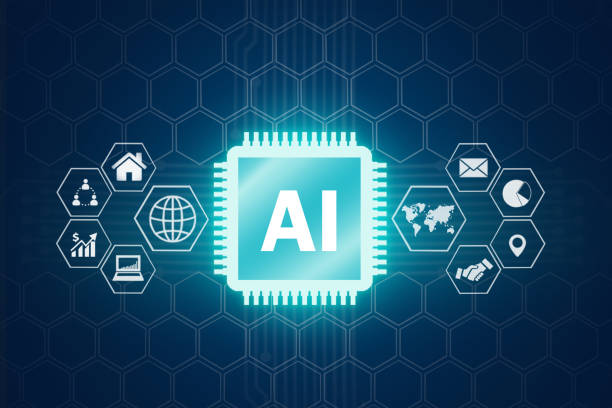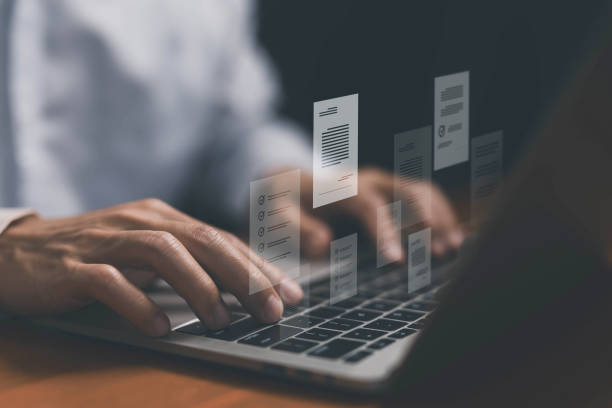Comprehensive Introduction to Custom Website Design
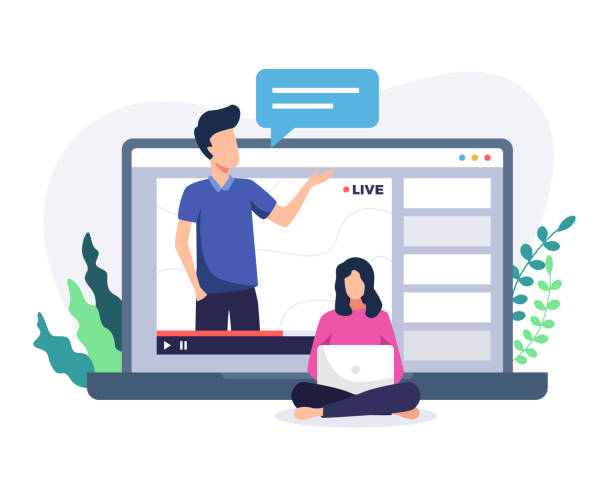
In today’s digital world, having a strong online presence is crucial for any business.
This presence doesn’t just mean having a website, but having a #unique, #efficient, and #tailored website that suits your specific needs.
This is where the concept of custom website design comes in.
Unlike using ready-made templates or general platforms, custom website design means building a website from scratch, considering all the unique details and requirements of your business.
This approach allows you to fully customize every aspect of your website, from its appearance and user interface to its technical capabilities and backend, entirely based on your goals and brand.
A custom site not only gives your business a professional and distinctive look but also provides unparalleled flexibility for future growth and development.
This process includes thoroughly analyzing business needs, competitor analysis, designing unique user experience (UX) and user interface (UI), developing code from scratch, and implementing specific required features.
The ultimate goal of custom website design is to create a digital platform that not only meets your current needs but also serves as a foundation for continuous innovation and progress.
This approach ensures that your website not only looks beautiful but also performs at the highest level functionally, providing a seamless user experience for visitors.
This is a comprehensive explanation of the foundation and basis of custom website design.
Tired of your company’s website not getting the visibility it deserves and losing potential customers? Solve this problem forever with professional and effective website design by Rasawp!
✅ Increase brand credibility and gain customer trust
✅ Attract targeted sales leads
⚡ Contact us now for a free consultation!
Why is Custom Website Design Better Than Ready-Made Templates?
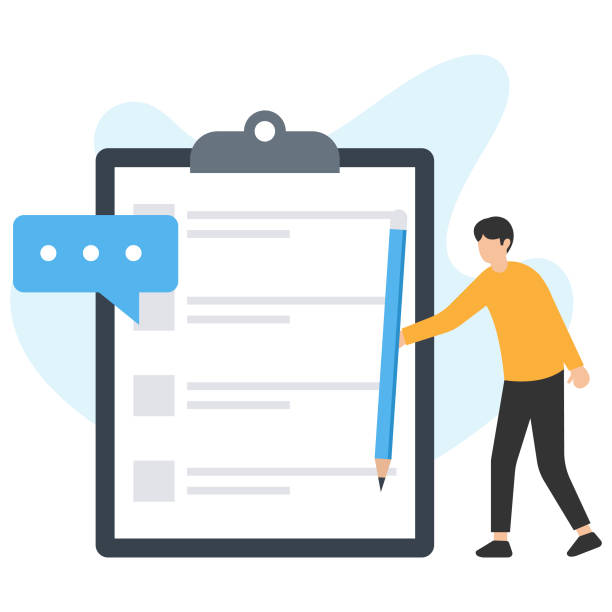
This is an analytical and guiding content piece to help you understand the differences.
While ready-made website templates (like WordPress or Joomla with pre-built templates) can be quick and low-cost solutions, they have significant limitations that might harm your business in the long run.
In contrast, custom website design offers unparalleled freedom and flexibility.
The first and most important advantage is complete customization capability.
Ready-made templates often limit you to pre-defined layouts, features, and functionalities, whereas a custom site allows you to design every element precisely according to your brand identity and operational needs.
This means no extra, messy code that slows down site loading speed and makes search engine optimization (SEO) difficult.
Furthermore, scalability is another key advantage of custom website design.
Businesses grow over time, and their needs change.
A custom website can easily adapt to these changes, add new features, and support higher traffic volumes without performance degradation.
Ready-made templates, however, might face challenges when dealing with rapid growth or the need for more complex functionalities.
Security is also a crucial factor; custom sites generally have higher security as they are less targeted by common attacks and have fewer vulnerabilities present in widely used templates.
Finally, with custom website design, you have full control over your ownership and data, with less dependence on third-party providers.
These differences justify the investment in customized website creation.
Key Stages in the Custom Website Design Process
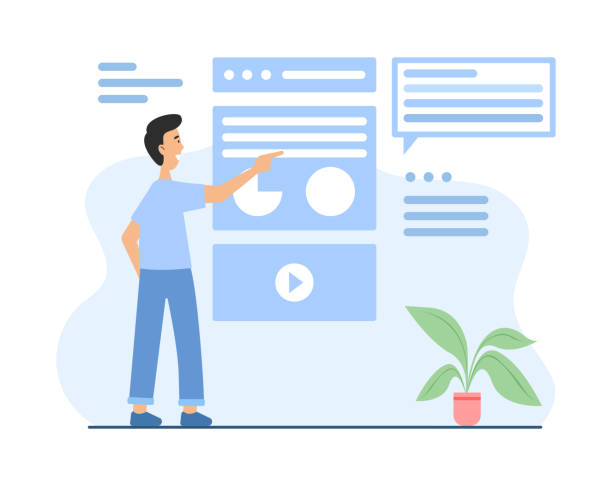
The custom website design process is a systematic, multi-stage approach where each step is crucial for ultimate success.
This section provides an educational and specialized explanation of the main stages.
The first stage is analysis and planning, which involves a deep understanding of your business goals, target audience, technical requirements, and budget.
In this stage, information gathering and requirement definition are paramount.
Next, the wireframe and prototype design phase begins; in this step, the visual structure of the site, user flow, and element layout are created without focusing on graphic details.
The goal is to ensure a smooth and logical user experience.
After wireframes are approved, it’s time for user interface (UI) and graphic design.
In this stage, visual designers use colors, fonts, images, and graphic elements to shape the final appearance and visual identity of the site.
This stage includes creating a cohesive and attractive design language for the entire site.
Then we move into the Development stage, which involves frontend (HTML, CSS, JavaScript) and backend (PHP, Python, Ruby on Rails, etc.) coding, as well as database setup.
This is where visual designs are transformed into a dynamic and operational website.
After development, the testing and debugging phase involves thoroughly checking site performance across various browsers and devices, ensuring security and loading speed, and fixing any potential bugs or errors.
Finally, after final approval and rectification of all issues, the Deployment and Maintenance stage arrives.
In this step, the site is placed on the server and becomes publicly accessible.
But the work doesn’t end here; ongoing maintenance, updates, and technical support are vital for preserving optimal site performance and security.
This comprehensive and precise process ensures that the final result will be a high-quality custom web development perfectly tailored to your needs.
| Stage | Description | Key Goal |
|---|---|---|
| Analysis and Planning | Defining goals, audience, and technical requirements | Full project understanding |
| Wireframe and Prototype Design | Creating roadmap and site skeleton | Optimizing user flow |
| UI and Graphic Design | Designing visual appearance and brand identity | Creating visual appeal |
| Development (Frontend and Backend) | Coding and implementing site functionalities | Transforming design into operational site |
| Testing and Debugging | Full site testing for performance and security | Ensuring quality and bug fixing |
| Deployment and Maintenance | Site launch and continuous support | Stability and updates |
The Role of Custom Website Design in SEO and Branding
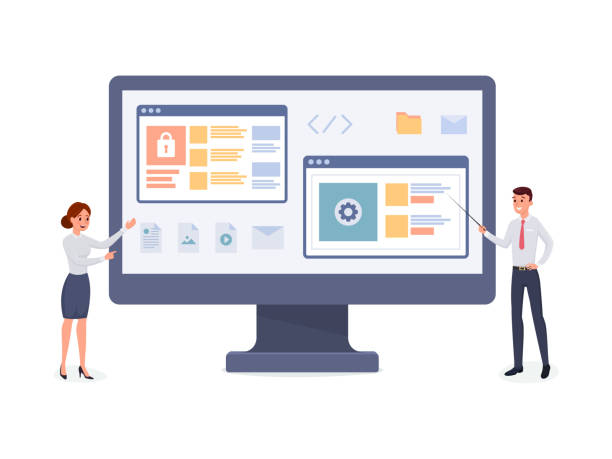
Custom website design goes beyond a beautiful appearance; it’s a strategic investment for long-term success in the digital space, especially in the realms of SEO and branding.
This is specialized content that addresses these vital connections.
One of the most important advantages of a custom site for SEO is complete control over coding and site structure.
While ready-made templates often come with extra, unoptimized code that reduces loading speed and makes indexing by search engines difficult, a custom site can be optimized with clean, lightweight code.
This significantly helps improve the site’s ranking in search results, as speed and code structure are important Google ranking factors.
Additionally, custom website design allows you to precisely set your URL structure, meta tags, and content structure according to your technical SEO strategy.
This flexibility makes it easier for search engines to understand your content and display it to relevant users.
From a branding perspective, a custom website is the complete embodiment of your business’s visual identity and philosophy.
Every element, from color scheme and fonts to how users interact with the site, can precisely reflect your brand.
This helps create a cohesive and memorable experience for users, leading to strengthened brand recognition and customer loyalty.
A custom site allows for the implementation of unique features that can differentiate your brand from competitors and create a competitive advantage.
For example, specific interactive tools, custom galleries, or online booking systems designed precisely for your business model can improve the user experience and establish a deeper connection with the audience.
This deep customization in unique website creation not only helps with greater visibility in search engines but also leads to the formation of a powerful and professional image of your brand in the minds of the audience.
Are you tired of your e-commerce site having visitors but no sales? Rasawp solves your main problem with professional e-commerce website design!
✅ Significant sales increase with targeted design
✅ Flawless user experience for your customers
⚡ Get a free consultation!
The Importance of User Experience (UX) in Custom Website Design
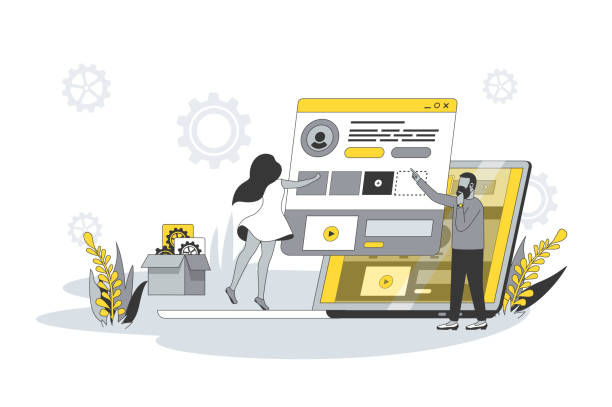
User Experience (UX) is the core of successful custom website design, and this section addresses it in a specialized and guiding manner.
UX refers to the overall experience a user has when interacting with your website; from the moment they land on the site until they achieve their goal, be it purchasing a product, finding information, or making contact.
An excellent user experience encourages visitors to spend more time on your site, access information more easily, and ultimately become loyal customers.
In custom website design, unlike ready-made templates that often have generic UX, every aspect of the user experience can be customized.
This customization includes designing logical and intuitive User Journeys, optimizing page loading speed, creating user-friendly forms, and ensuring the site’s Responsive Design for proper display across all devices, from desktops to mobiles and tablets.
A strong user experience significantly increases the Conversion Rate.
When users can easily find what they are looking for and processes are simple and barrier-free, the likelihood of them performing your desired action (such as purchasing or signing up) greatly increases.
Furthermore, Google and other search engines are increasingly emphasizing UX factors for website ranking.
Sites with poor user experience, such as slow speed, complex navigation, or lack of responsiveness, may drop in rankings.
Therefore, investing in UX during the custom website creation process is not only beneficial for your users but also crucial for site SEO.
This approach ensures that your site not only looks beautiful but is also practically efficient and can achieve your business goals.
The Future of Custom Website Design and Adaptability to Changes
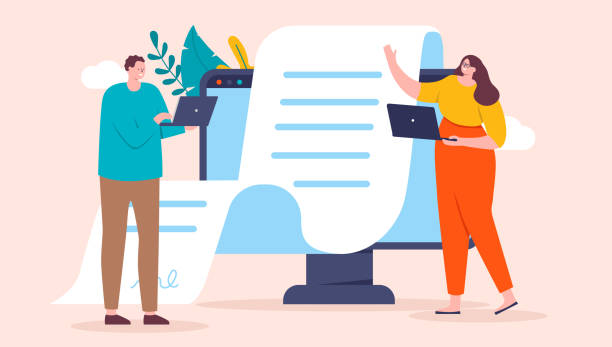
The digital environment is constantly evolving, and this section provides news and analysis on the future of custom website design and how it adapts to changes.
New trends such as Artificial Intelligence (AI), Augmented Reality (AR), Web 3.0, and the Internet of Things (IoT) are emerging, holding great potential to change how we interact with websites.
Custom website design, with its flexible nature, is the best platform for adopting and implementing these emerging technologies.
For example, integrating AI-powered chatbots for customer support or providing a personalized user experience, or using augmented reality to display products in customers’ real environments, are just some of the possibilities that can be implemented on a custom site.
Ready-made templates, however, often face significant limitations when integrating with advanced technologies.
The future of custom web development will also focus on deeper personalization and entirely unique experiences.
By collecting and analyzing user data, custom sites can dynamically adjust content, offers, and even the user interface based on each user’s behavior.
This level of personalization increases customer loyalty and improves conversion rates.
Furthermore, cybersecurity will remain a major concern, and custom sites are in a better position with more secure structures and the ability to implement advanced security protocols.
Custom website developers must always stay updated on the latest threats and security solutions to protect sensitive customer data.
Finally, the focus on sustainability and green performance is also increasing; optimizing code and hosting to reduce energy consumption and carbon emissions is another aspect that will gain importance in the future of custom website design.
Comparing the Cost and Value of Custom Website Design
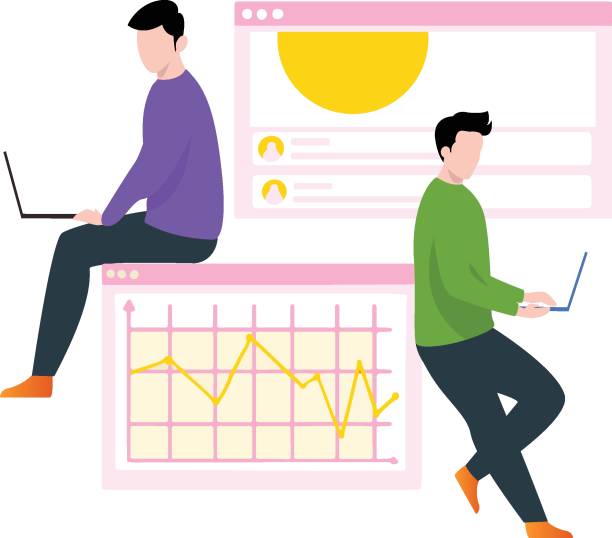
The challenging question here is: Is investing in custom website design truly worth it given its initial costs? The answer is complex, but with a deeper analysis, it becomes clear that its long-term value often far exceeds the initial expenses.
At first glance, the cost of a custom website might seem much higher compared to using ready-made templates or free platforms.
Templates might only cost a few hundred dollars, whereas customized website creation can range from a few thousand to tens of thousands of dollars or even more, depending on the complexity and required features.
But this is not merely a price comparison; it’s a value comparison.
A custom site allows you to have a completely unique and optimized platform tailored to your specific business needs.
This means infinite flexibility for growth, unlimited scalability, higher security, and optimal SEO performance.
These factors directly influence increased traffic, improved user experience, and ultimately, increased conversion rates and revenue.
In contrast, ready-made templates often face limitations in design, performance, and scalability, which can harm your business in the long run.
Suppose a ready-made template is initially cheaper, but if you have low traffic due to lack of SEO optimization, or if you cannot add new features crucial for your business growth due to functional limitations, that initial ‘saving’ turns into a significant ‘opportunity cost’.
Custom website design acts as an investment in your digital infrastructure that yields significant returns over time.
It is an asset that grows with your business and continuously increases your brand’s online value.
Therefore, although the initial cost may be higher, the long-term value and return on investment (ROI) of a custom website design are far greater for serious businesses.
| Feature | Custom Website Design | Ready-made Templates/CMS |
|---|---|---|
| Initial Cost | Higher | Lower |
| Customization Capability | Complete and Unlimited | Limited to template framework |
| Scalability | Very high, growth potential | Limited, requires upgrade/platform change |
| SEO Optimization | Full control, clean code | Dependent on template quality, extra code |
| Security | Higher, fewer vulnerabilities | Common, target of general attacks |
| User Experience (UX) | Optimal and unique | Generic and less personalized |
Maintenance and Support for a Custom Website
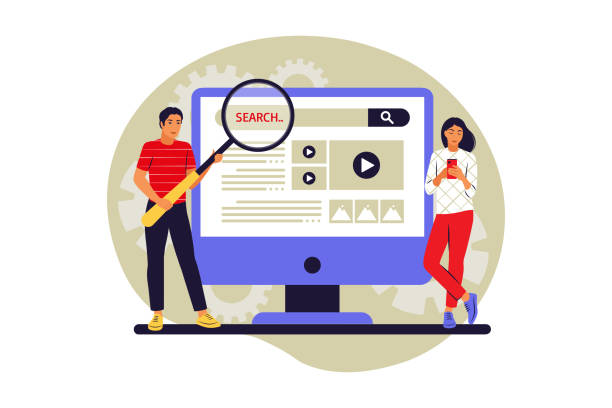
After launch, custom website design requires ongoing maintenance and support to preserve its optimal performance, security, and up-to-dateness.
This is a critical guidance section that is often overlooked.
Website maintenance includes technical updates, performance monitoring, regular data backups, and ensuring compatibility with the latest browser versions and technologies.
Custom websites, although built from scratch with clean code, still require monitoring to prevent potential vulnerabilities.
Technical support includes resolving potential issues, answering questions related to site performance, and implementing minor changes or developing new features.
This ensures that any problems that may arise are quickly identified and resolved.
Also, as technology evolves and business needs change, it may be necessary to add new features to the site or improve existing functionalities.
A strong support team in custom website design can assist you in these matters.
Security is also a critical aspect of maintenance.
Cyberattacks are always lurking, and your website must be protected against them.
This includes security updates, monitoring suspicious activities, and implementing firewalls and SSL certificates.
Failure to address maintenance and support can lead to slow site speeds, security flaws, data loss, and ultimately, reduced search engine rankings and a poor user experience.
Therefore, a significant part of investing in unique website creation is allocating budget and time for professional maintenance and support.
This approach ensures that your site always remains in its best condition and continuously contributes to your business goals.
Did you know your company’s website is the first point of contact for 75% of potential customers?
Your website is the face of your brand. With **Rasawp**’s corporate website design services, build an online presence that earns customer trust.
✅ Creating a professional and lasting image of your brand
✅ Attracting targeted customers and increasing online credibility
⚡ Get a free consultation from **Rasawp** experts!
Successful Examples of Custom Website Design
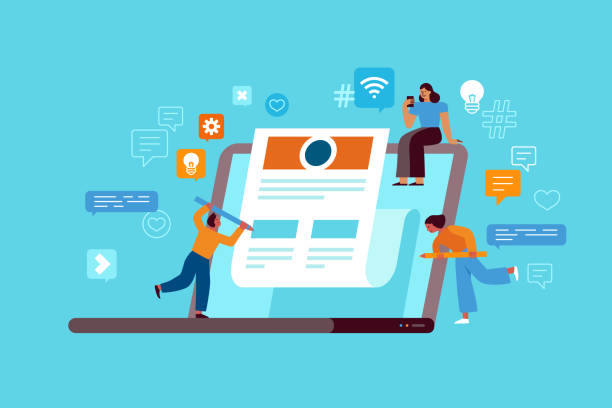
To better understand the value of custom website design, looking at successful and engaging examples can be very inspiring.
Many leading brands and innovative companies worldwide owe their success to investing in custom websites that not only meet their technical and business needs but also provide an unparalleled user experience for their customers.
For example, large technology companies like Google or Apple, although possessing vast platforms, utilize custom approaches in specific sections of their websites to offer interactive and unique experiences that are not achievable with generic templates.
In the e-commerce sector, many successful online stores aiming to build a strong brand and a unique shopping experience have moved towards custom web development.
These stores can implement complex inventory management systems, advanced search capabilities, personalized offers based on user behavior, and specific user interfaces that are perfectly compatible with their business model and products.
This customization not only helps increase sales but also makes customers feel as if they are in a unique space tailored to their needs.
Even small and medium-sized businesses can benefit from custom website design.
For instance, a photography studio can have custom image galleries with unique animations, or an architectural firm can showcase its portfolios with interactive 3D models.
These specific features not only differentiate the website from competitors but also provide visitors with a memorable and engaging experience.
These examples demonstrate how custom website design enables businesses to maximize their creativity and establish a powerful and impactful online presence.
Conclusion and Next Steps in Custom Website Design
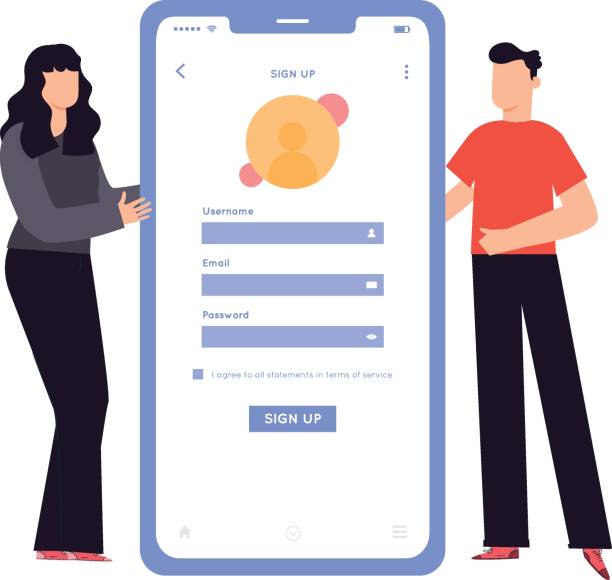
At the end of this explanatory and guiding article, it is clear that custom website design is a strategic and powerful investment for any business seeking a distinctive, efficient, and sustainable online presence.
We explored how this approach provides unparalleled flexibility in customization, scalability for future growth, higher security, and better optimization for search engines.
We also saw how User Experience (UX) and branding reach their peak in a custom site, and how these sites can adapt to future novel technologies.
If you’ve reached this point, you’re probably convinced that custom website design is the right path for your business.
What’s the next step? The first step is to precisely define your business goals and needs.
Before contacting any web design agency, prepare a list of required features, functionalities, and messages you want your website to convey.
Then, consider a realistic budget and remember that this is an investment with long-term returns.
The next step is choosing a web design team or agency with experience and expertise in custom website design.
Review their portfolio, speak with their previous clients, and ensure their work culture aligns with yours.
A professional team will not only bring your designs to life but also advise you during the planning and optimization stages.
Remember that unique website creation is a collaborative process, and effective communication with the development team is key to success.
By taking these steps, you will be on the right path to having a powerful and successful online presence with a custom website design that helps achieve your business goals.
Frequently Asked Questions
| Question | Answer |
|---|---|
| What is custom website design? | The design and development of a website built from scratch based on the specific needs, goals, and brand of a business or individual, without using ready-made templates or general platforms. |
| What are the main advantages of custom website design? | High flexibility in design and functionality, unlimited expandability, greater security, better SEO optimization, a unique user experience, and full compatibility with the brand’s visual identity. |
| Is custom website design more expensive than using ready-made templates? | Yes, it usually has a higher initial cost than using ready-made templates, as it involves more time and effort for needs analysis, unique UI/UX design, and custom coding. |
| Who needs custom website design the most? | Businesses with complex and unique functional requirements, brands seeking a strong and distinctive visual identity, startups needing scalable platforms, and companies prioritizing high security. |
| What are the main stages of designing a custom website? | Includes needs analysis and gathering, site structure planning and definition, User Experience (UX) and User Interface (UI) design, coding and development (frontend and backend), testing and debugging, and finally launch and maintenance. |
And other services of Rasa Web advertising agency in the field of advertising
Smart Conversion Rate Optimization: Designed for businesses seeking online growth through user experience customization.
Smart SEO: An effective tool for digital branding with the help of attractive user interface design.
Smart Content Strategy: A new service for increasing website traffic through intelligent data analysis.
Smart Content Strategy: Revolutionize click-through rates with the help of Google Ads management.
Smart Digital Advertising: A combination of creativity and technology to increase sales through SEO-driven content strategy.
And over hundreds of other services in the field of internet advertising, advertising consultation, and organizational solutions
Internet Advertising | Advertising Strategy | Advertorial
Sources
Comprehensive Guide to Custom Website DesignYour Dream Website DesignProfessional Website Design TipsAdvantages of Custom Sites
? To reach the peaks of success in the digital world, Rasawp Afarin Digital Marketing Agency, specializing in SEO, content creation, and user-friendly website design, paves the way for your business growth.
📍 Tehran, Mirdamad Street, next to Bank Markazi, Kazerun Jonubi Alley, Ramin Alley No. 6


